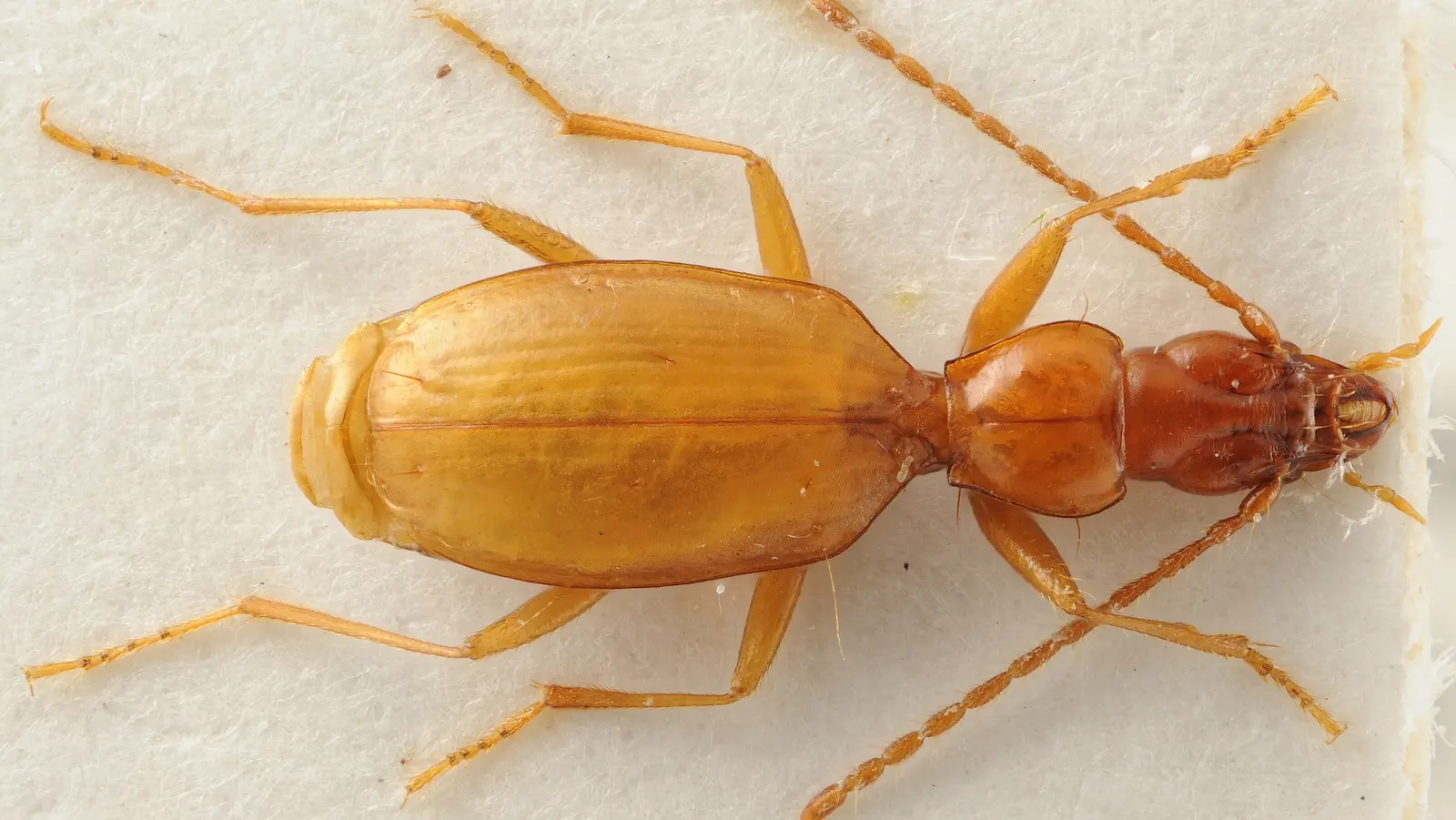If we change the names of genes because of MS Excel why not change names to make the world a little less awful for some people as well.
Fascinating article. I’m not in favor of changing names attributed to those who discovered the organism, but anything named after another person is fair play. Obviously this is an overly simple hot take.
Aside: my late grandmother’s use of a certain colloquial term for Brazil Nuts kept going through my head. I’m glad to have not heard it since she passed.
Probably lots of birds. Anything with “tit” or “breast(ed)” might be illegal to teach about in Florida.
I was a bit surprised Lenin was on the list with Stalin and Hitler. Can anybody fill me in? Afaik, whether you agree with it or not, at least he had his reasons. During his period, as far as I understand, science and art flourished.
Here’s a decent write up:
Lenin belonged to the generation of revolutionary romantics, while Stalin was a relentless, pragmatic empire builder, hard as nail in his Machiavellian understanding of politics.
Lenin pioneered concentration camps for his own non-combatant compatriots, but they were not a feature of his rule, and were not as deadly as Stalin’s Gulag. He had a liking for hostage taking and summary executions. But Lenin was disarmingly straightforward about it. Meanwhile, Stalin went to great lengths to make his giant people-mower of state as unobtrusive and undocumented as possible—yet the sheer scale of human death and suffering caused by him makes him very hard to defend even for extreme fans of radical justice.
Stalin turned on his own party comrades, killing them in their thousands. Lenin didn’t do that even to people who he considered traitors to the proletarian cause
Lenin allowed factions in the party. You could disagree with the man on some fundamental things, and still sit on the Central Committee. (Modern cappuccino Communists, who never seem to agree with each other on anything, greatly appreciate that). With Stalin, doing the same was suicidal.
Lenin’s secret police Cheká was a loose bunch of marauding, sadistic, homicidal predators in revolutionary garbs who were good for terrorizing population and showing everyone who is in charge, but rarely for much else. The Kremlin had very scant control over who they were and what they were doing outside the inner circles of most trusted Bolsheviks. Stalin’s GPU-NKVD-MGB-KGB was a huge, well-oiled, highly trained killing and spying machine kept by Stalin in good shape and on a very short leash—a beast rarely appreciated by revolutionary romantics.
Lenin was a challenger, an underdog, a figure many of us can relate to. Stalin is known to history as a half-god moving around armies and industrial plants from the safety and comfort of the Kremlin. He’s an object of study, hate, admiration, but hardly someone you can imagine enjoying a cup of cappuccino with.
So not great but much better than Stalin
So not great but much better than Stalin
Although admittledly “better than Stalin” isn’t exactly a high bar, considering how spectacularly awful of a person he was. Some level of “excess brutality” is pretty much expected when it comes to Russia and Russian leaders, and Lenin doesn’t stand out particularly much in that regard, and he wasn’t a sadistic psychopath like Stalin and did genuinely seem to want to bring about a better society for everyone, instead of what they got after Stalin was through.
If someone is offended by a specie name, they should change. Visit a psychologist, perhaps.
They should revamp all the names, and only leave descriptive names in latin.
What wasn’t possible in the 1800s because of lack of quick communications, leading to multiple explorers using the same name, is not a limiting factor anymore. Just keep an official centralized database, like for trademarks.
I know, a bunch of stuff has been named for their “discoverers”, and they deserve some credit… which goes best in a “classified by” field in a database, along a “year of classification”, “place of classification”, “other names”, and such. Add a “previously classified as” field, and even searching by the old name is no longer a problem.
They should revamp all the names, and only leave descriptive names in latin.
This is exactly what the American Ornithological Society did for English bird names.
You realize that there are millions of species (according to wiki about 8-8.7 million eukaryotes alone) out there and that in many fields, there is not a lot of information on how a species looks like etc? Additionally we already have a great chaos of names and terms and it is often not easy to sort out a name for a certain species (that’s why there are tools like plantsoftheworldonline). I get the urge to just start from scratch and give them all descriptive names, but this would be a huge undertaking spanning many different areas of research interests. Maybe as a good example, just think of Coleoptera. There are about 400,000 described species with an estimate of “0.9 to 2.1 million total species”. Many of these you can really only identify by their genitalia. So what would be descriptive names? Mostly related to genitalia I guess. But that wouldn’t help a layman. You could also look at plants: orchids have about 27,000 described species. Often with very minor differences in flower morphology. Or you look at fungi, bacteria, archaea, protists and all the other more cryptic groups. And then you realize, names and the taxonomy of huge groups of taxa frequently change. As an example look at the APG where they massively changed the taxonomy of angiosperm plants. Maybe it would be a good idea if some researchers/taxonomists clean up a bit in their area of expertise. And as you can see, they already do. There won’t be any unifying, overarching taxonomy of all taxa though. What’s limited the people in the 1800’s doesn’t limit us today, true. But what limits us today is the sheer amount of information we already collected.
Many of these you can really only identify by their genitalia. So what would be descriptive names?
Let me present: Opeatocerata megalophallus (NSFW… or something… Google it at your own risk)
that wouldn’t help a layman
A layman doesn’t get impacted by the taxonomy of anything. Whether it’s an Ursus Arctos, a Pangasius Hypophthalmus, a Staphylococcus Aureus, or an Acacia Barbinervis, what a layman wants to know is whether: it can eat them, they can eat it, or neither.
in many fields, there is not a lot of information on how a species looks like
If there is a way to tell two species apart, that information can be used to name them. If there is no way to know how they look, just slap an ID number; no look, no name.
what limits us today is the sheer amount of information we already collected.
I don’t think that’s really a limitation. Start with a sequential ID number, add identifying information, references to IDs with whatever similarities or relationships, think of a descriptive name afterwards.
So your idea is to get rid of names and replace them by IDs? But how would communication between researchers work then? If I say, “Do you know R283BQ23? Oh no, that’s actually R283BQ24”. OK, so you propose to use descriptive names for more common species I guess. But how can you make a distinction which species are important enough to have a descriptive name? For specialized researchers the species in their field need a rememberable name. So you end up with a big list of IDs and many new (and some old) descriptive names. You have now just made everything more complicated for everyone. Researchers already work on making the species names workable. If you look at plantsoftheworldonline, they already have a huge database of species IDs with additional information. Why introduce a sequential ID number? Have you worked in biology or taxonomy? (From how you write species names I would think not). I think it’s a nice idea to have such a neat order with sequential IDs. But you quickly realize how hard this would be to accomplish the moment you start working with any organism. Just thinking of multiple species that are actually the same or any species that is actually two or species that hybridize a lot or species interactions or species that we simply cannot tell apart yet but that are probably various species. As much as I like order, as much I have to admit that nature is messy and we try to impose an artificial structure onto it that will never fit.
Regarding the actual debate on changing offensive names of species (or whole genera/higher taxonomic orders), I would be in favour. I get why we need consistent rules but the article gives good examples how this can be accomplished. I would also be in favour of more descriptive names and a ban on naming taxa after people. On the other hand, from the hundreds (thousands?) of species I know/had to learn, many are named after people and as I said, it will be very hard to find good descriptive names for millions of species. These rules preventing us from arbitrarily changing names means also that older names stick so often the descriptiveness of names can be deceptive. A made up example could be following: someone newly describes the species you named before O. megalophallus because in the genus Opeatocerata there hasn’t been any species with such a long phallus. But then other researchers later find various species more with even larger penises. Now you already have O. megalophallus with a more median penis and have to come up with new descriptive names for the other species…
Yes. I suggest we change homo sapiens sapiens to something else. It doesn’t really apply either.









